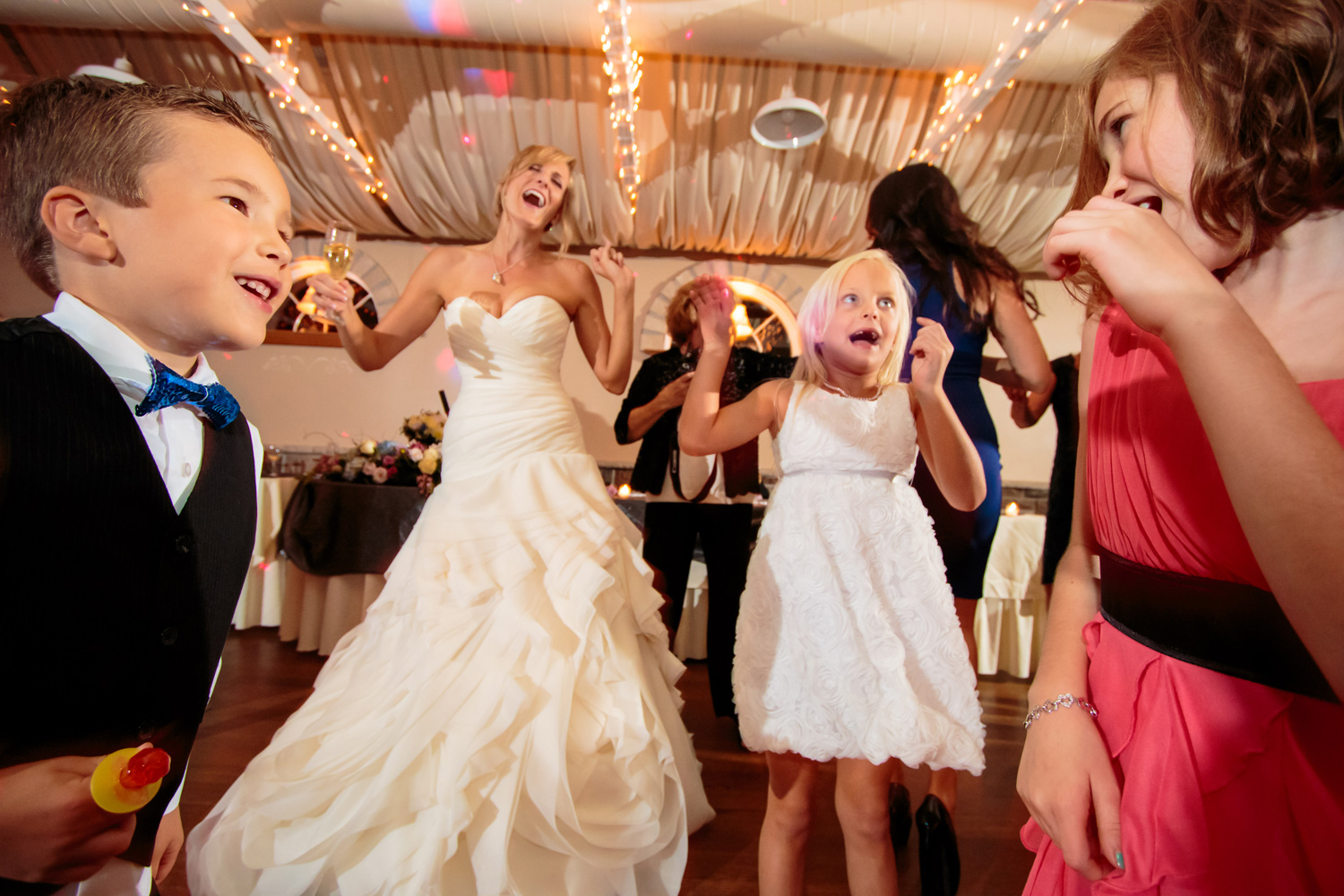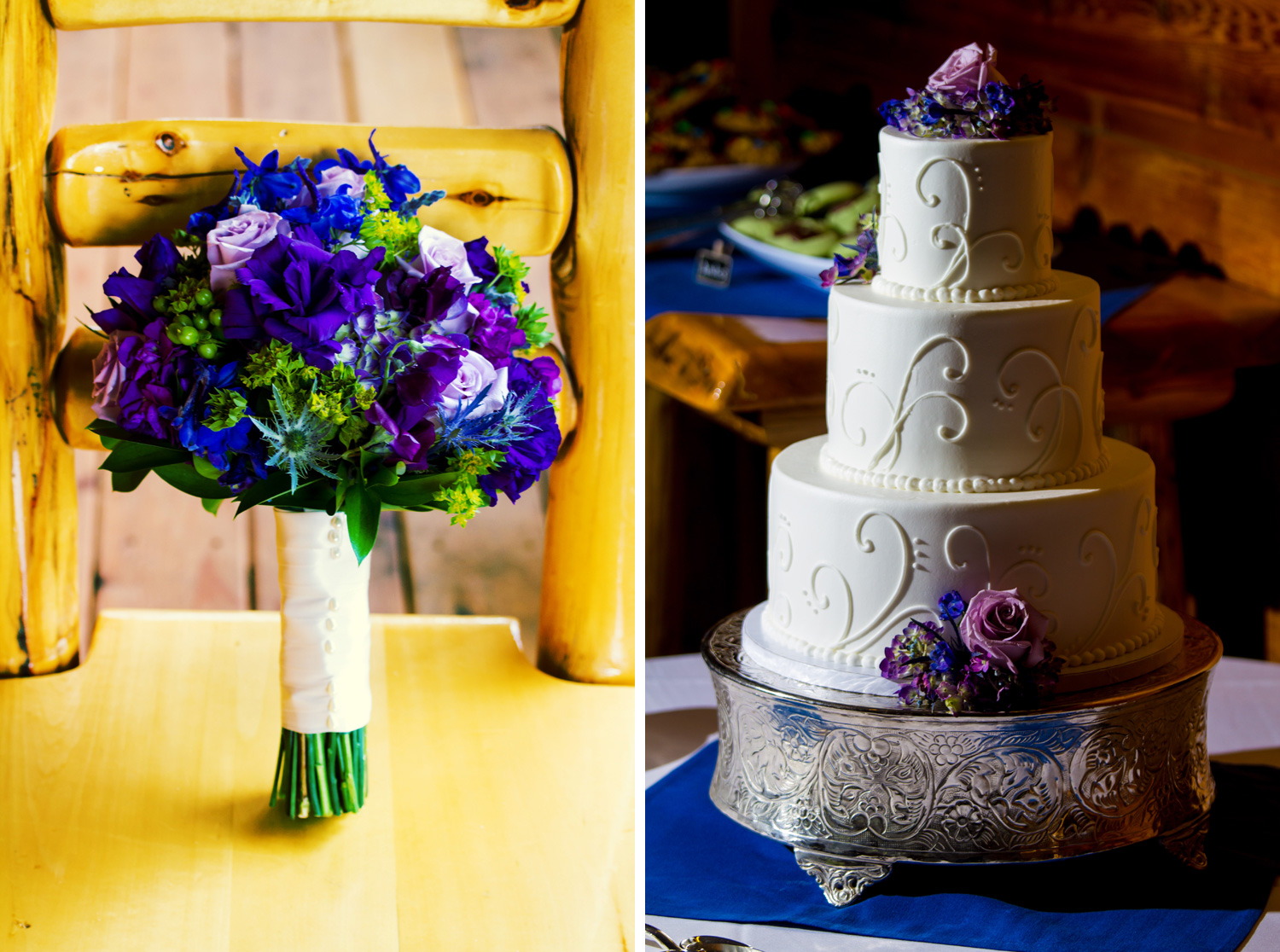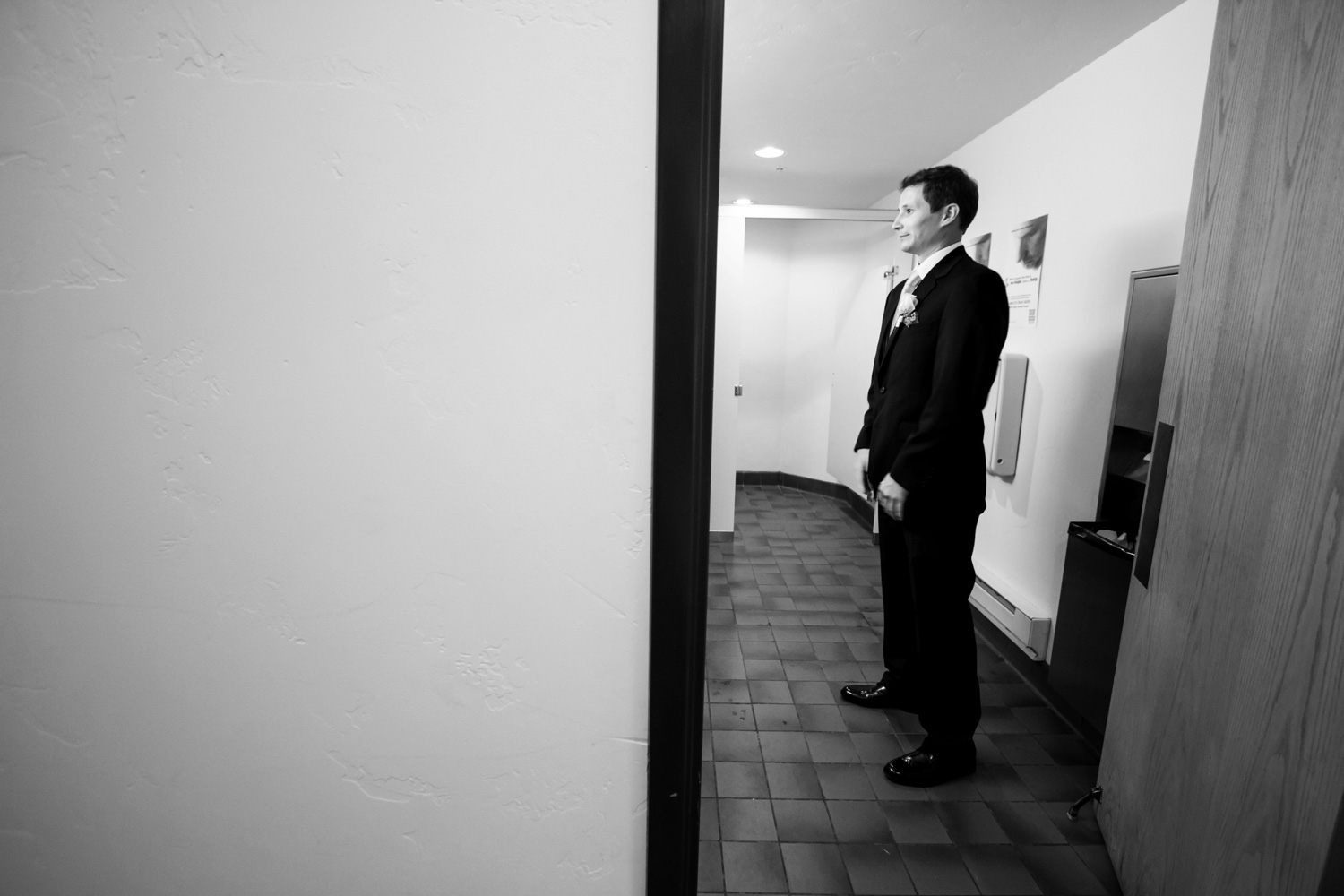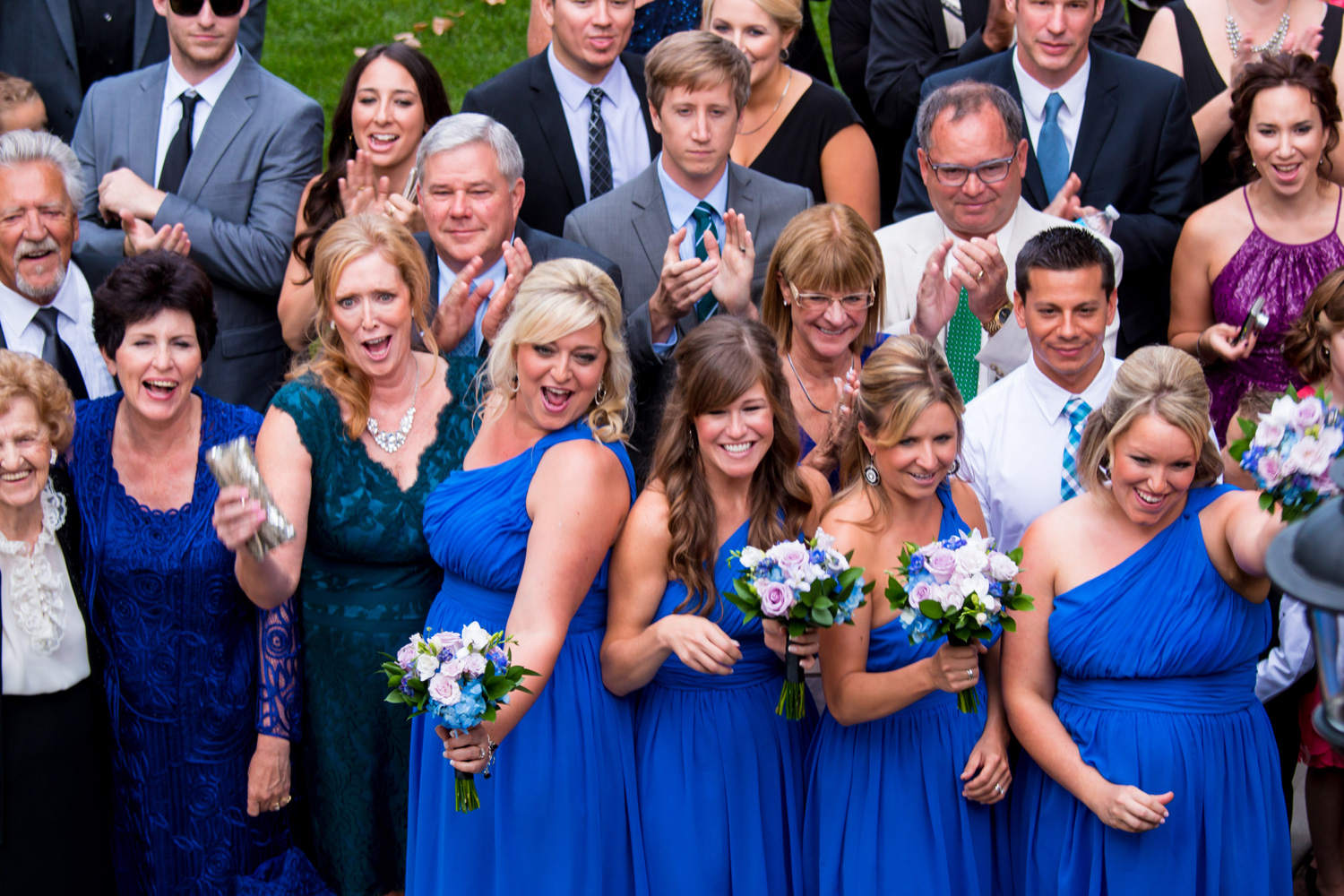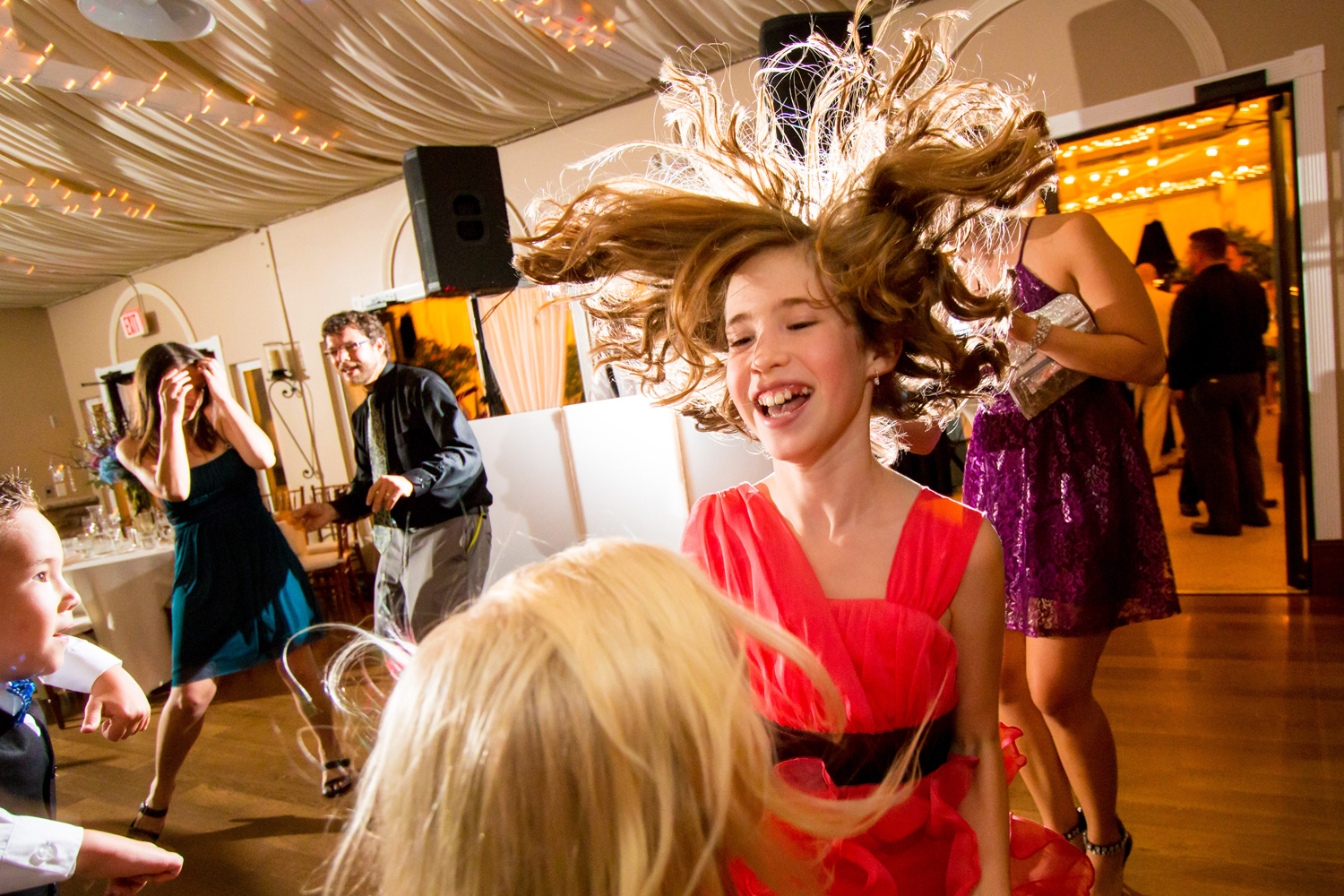Autumn 2013 — In the last decade I’ve photographed hundreds of weddings, elopements, and engagements with Canon APS-C Elan series of digital camera bodies. With multiple copies of the 20D, 30D, 40D, 60D and 7D I've captured joyous gatherings throughout the Rocky Mountain West of the United States. For the last four weddings, I've been using Canon's latest successor in the series — the 70D. Following are some random reflections from my time in the field and a few processed final images as my clients will see them.
Canon 70D | Canon EF-S 10-22 zoom | ƒ3.5 @ 1/200th | ISO1250
Canon 70D | Canon EF-S 10-22 zoom | ƒ3.5 @ 1/50th | ISO1250
Canon 70D | Canon EF-S 10-22 zoom | ƒ4.5 @ 1/160th | ISO100
CANON 70D WEDDING PHOTOGRAPHER REVIEW
Until the 70D, I was a wedding photographer with two 60D and two 7D bodies with a range of zoom and prime Canon lenses. I preferred the handling and weight of the smaller 60D but relied on the 7D's for its significantly more robust auto-focus system. The new 70D appeared to be a mix of the best of both cameras, a lighter weight 7D with a great feature set borrowed from other Canon bodies both up and down the range. I prefer to shoot with a consistent fleet of bodies with the same menus and controls, so the question is asked: Could 70Ds alone replace my mixed bag of 60Ds and 7Ds? My prime concerns are handling autofocus, and high ISO shooting.
Canon 70D | EF-S 10-22 zoom | ƒ16 @ 1/250th | ISO100
Canon 70D | left EF-S 60mm Macro ƒ4.0 @ 1/100th ISO100 | right 70-200 4 IS zoom ƒ4.0 @ 1/20th ISO100
Canon 70D | EF-S 60mm Macro | ƒ4.0 @ 1/100th | ISO1250
Canon 70D | 85mm 1.8 USM | ƒ2.8 @ 1/125th I ISO400
HANDLING
With a schedule of 50+ weddings a year, it's not uncommon for me to shoot for 2 to 4 days in a row and I appreciate a lightweight camera system with excellent ergonomics. For example, while most wedding photographers would choose a large 70~200 2.8 zoom for their telephoto tool ("big white" as I call it), my choice is a mix of three lighter weight lenses — the 70~200 4 IS, the 85/1.8 and 135L. To that end (lighter and less conspicuous), the 70D is a joy to shoot. The size is a bit smaller, the weight is perfect, the grip is easy to hold like the 60D, and the thumb rest has evolved to perfection — akin to Canon's excellent handling 6D. The 60D is the most comfortable camera I ever used, with one glaring negative — AF point selection. Since my first Canon camera — the 20D — I've loved the picking AF points with the little joystick next to the chimp screen. It was dropped on the 60D, in favor of a combo dial / multi-directional controller, which I didn't mind because the dial was fairly large and easy to manipulate. On the 70D however, the combo dial has gotten noticeably smaller and moving the AF point to the left of your composition is a very un-natural movement for your thumb. After my second wedding with the 70D, my right thumb was sore the next day. After the fourth wedding with the new camera, no more pain. My thumb muscles got used to the new movements, and I discovered C.Fn II, page 10 in the menu set-up: Manual AF pt. select. pattern. Select it to 1, continuous. Now keep moving to the right to and the AF point will "loop" over to the left side. Works for me. I miss the joystick, but this isn't a deal breaker.
Canon 70D | EF-S 10-22 Zoom | ƒ3.5 @ 1/60th | ISO125
Canon 70D | EF-S 60mm Macro | left ƒ5.6 @ 1/80th ISO125 | right ƒ3.5 @ 1/160th ISO100
Canon 70D | EF-S 10-22 Zoom | ƒ3.5 # 1/30th I ISO640
Canon 70D | EF-S 70-200 4 IS Zoom | ƒ4.0 @ 1/160th I ISO100
Canon 70D | EF-S 10-22 Zoom | ƒ4.5 @ 1/125th I ISO200
Canon 70D | EF-S 10-22 Zoom | ƒ3.5 @ 1/50 I ISO1000
Canon 70D | EF-S 10-22 Zoom | ƒ3.5 @ 1/60th I ISO1250
AUTO FOCUS
Canon's legacy 9-point AF system was adequate for a wedding photographer — until the lights went off. Shooting with an EF-S 10~22 on a 60D I never had an issue with autofocus until that point at the reception when the DJ would invariably turn off all the house lights. My choice to continue shooting was either a) mount a speedlight and incorporate the red assist beam or b) switch to a heavier 7D in my bag. The 7D, with it's newer and more sensitive 19-point system could deliver reliable focus to the very last sing-a-long, even with a relatively slow zoom like a 10~22 (and no AF assistance). For a 70D to replace a 7D in my fleet, it would have to pass the dark, drunken dancing test. Good news! It's an excellent evolution of the 7D system. More straightforward to configure on the fly, very responsive and it will keep up with almost any lights off wedding reception to the very end. Canon rates the 70D as sensitive as the 7D (-.5 ev at center point) but I find low light support for a slow lens like a 70~200 4 IS to be better than the 7D and won't hesitate to use "little white" for toasting coverage in the rare event that the prime lens 135L won't get me close enough. There's also great all-around response with my beloved 10~22 and the new face tracking live view works well. A problem lens like the EF-S 60mm Macro (known for hunting) is whip-fast and accurate. It's a great system. Wedding worthy.
Canon 70D | EF-S 10-22 Zoom | ƒ3.5 @ 1/60th | ISO1600
Canon 70D | Canon EF-S 10-22 Zoom | both images ƒ3.5 @ 1/60th I ISO1600
Canon 70D | 70-200 4 IS Zoom | ƒ4.0 @ 1/160th I ISO500
Canon 70D | EF-S 60mm Macro | ƒ8.0 @ 1/100th I ISO100
Canon 70D | 70-200 4 IS Zoom | ƒ4.5 @ 1/250th I ISO100
Canon 70D | 85mm 1.8 USM | ƒ2.8 @ 1/125th I ISO800
HIGH ISO
Processing and delivering over 35,000 images a year to clients, I've determined that while both the 60D and 7D could both shoot at ISO 6400, the color fidelity from the 60D was noticeably better over 3200 (particularly in skin tones). The new 70D has a native high ISO range of 12,800, and I'm happy to report it holds passable skin tones up to that mark. Thanks to consistent use of off-camera strobes, the ratio of images I shoot over ISO 1600 is relatively low, but it's nice to know I can shoot into severally dark conditions (even if the mixed color temperatures in those conditions are often unflattering). As for overall image quality, the new 20-megapixel sensor delivers a subtle evolution to the signature Canon look. Colors are pleasing, and detail is excellent. My office is filled with awesome two and three-foot canvas prints from the lowly 10-megapixel Canon 40D, so I'm pretty easy to please in this area. More pixels for cropping and higher resolution editing is a good thing, but DSLRs have been able to deliver great jumbo prints for years
Canon 70D | EF-S 60mm Macro | ƒ3.5 @ 1/50th I ISO5000
Canon 70D | EF-S 60mm Macro | ƒ4.0 @ 1/100th | ISO8000
Canon 70D | EF-S 60mm Macro | ƒ3.5 @ 1/100th I ISO5000
LITTLE SURPRISES
So much of the international press attention at the 70D's debut concentrated on the video-centric new Dual Pixel CMOS autofocus sensor that many of its modern niceties for still photography got overlooked in internet coverage about the new camera. I was delighted to discover the 70D includes a silent shooting mode (like the 6D and 5DmkIII) which is a big plus at weddings (especially during bride preparation and quiet church ceremonies). It's a beautiful low and lush sound, as opposed to a hard "slap" DSLR users are accustomed to hearing. Additional surprises are the auto-switching orientation linked AF point (like the 7D — different AF point/mode for horizontal vs. vertical shooting), a little viewfinder camera level (that I leave on all the time), plus an iPad -esque touch screen for configuring all the menus and modes. Under pressure, making fast mode and menu changes is a dream. Any other interface now seems second-class.
Another nice thing about the 70D is full radio wireless group control in Canon's 600 series speedlights (and the Youngnuo clones). I'm making plans to move my aging fleet of Canon 500 series and third-party speedlights (triggered by Phottix Strato II) over to the new integrated system so this inclusion is a big plus for me.
Canon 70D | EF-S 10-22 Zoom | left ƒ14 @ 1/250th ISO100 | right ƒ5.6 @ 1/160th ISO100
Canon 70D | EF-S 60mm Macro | ƒ3.5 @ 1/100th I ISO500
Canon 70D | 70-200 4 IS Zoom | ƒ4.0 @ 1/250th | ISO500
Canon 70D | left 70-200 4 IS ƒ4.0 @ 1/125th ISO200 | right 85mm 1.8 USM ƒ2.8 @ 1/160th ISO1000
WHERE THE 7D STILL SHINES
The 7D has a noticeably larger 100% viewfinder, versus the 70D which is 98% (not a big deal) but is also smaller (could be a big deal). Smaller viewfinders can aid in composition (taking in the whole scene more like a thumbnail) but make it more challenging to judge fine focus adjustments on the fly. I never felt the 70D viewfinder was inadequate until I grabbed a 7D for a few shots. The difference is noticeable. A much bigger deficit of the 70D is the smaller continuous shooting buffer, and slower card write speed. In well over a hundred events with the 7D, I've never hit buffer limit shooting RAW on medium speed Sandisk Extreme cards (it will shoot on Continuous High for a very long time). But at my first 70D wedding, I hit the ceiling on the burst memory (also shooting with a Sandisk Extreme). It's not an issue during general shooting for 90% of the day, but high frame rates such as recessionals and wild dancing it's noticeable and takes an adjustment in your shooting style. To fix, you're forced to either a) shoot more selectively b) switch to JPEG for those moments. The fix was upgrading all of the memory cards to Sandisk Extream Pro 95mb/sec. Finally, on the list of 70D deficits, Canon Professional Services has just announced they will no longer allow the Elan series of cameras ("60D and it's successors") to contribute to a user's points for qualification in CPS. They'll still repair the camera at your service level, but your qualification into membership won't be based on 70D ownership. A small thing really, as most photographers enough more than enough Canon lenses and speedlights to qualify at the level they desire.
Canon 70D | 70-200 4 IS Zoom | both ƒ4.5 @ 1/20th | ISO320
Canon 70D | EF-S 10-22 Zoom | ƒ3.5 @ 1/50th | ISO1250
Canon 70D | left 85mm 1.8 USM ƒ2.8 @ 1/125th ISO800 | right 70-200 4 IS Zoom ƒ4.0 @ 1/250th ISO200
Canon 70D | EF-S 10-22 Zoom | ƒ4.5 @ 1/160th | ISO500
Summary
Within a couple of days of receiving my 70Ds I sold my 60Ds on the used market — replacing them was a no-brainer. In a few weeks, the 7D's were gone as well. I will miss the larger viewfinder and and AF-point joystick of the 7D but the lighter weight, improved High ISO images, and 600 series speedlight control are too compelling to pass up.
All images were converted from RAW with Adobe Lightroom release candidate 5.2 and a web sharpening / resizing routine in Photoshop CC.
Canon 70D | left 85mm 1.8 USM ƒ2.8 @ 1/125th ISO500 | right 70-200 4 IS Zoom ƒ4.0 @ 1/125th ISO2000
Canon 70D | Canon 135L | ƒ2.8 @ 1/1000 | ISO100
Canon 70D | EF-S 10-22 Zoom | ƒ3.5 @ 1/160th | ISO2500
Canon 70D | left 85mm 1.8 USM ƒ2.8 @ 1/125th ISO100 | right EF-S 60mm Macro ƒ2.8 @ 1/00 ISO2500
UPDATE :: 7DMKII FOR WEDDING PHOTOGRAPHY
Since the initial publishing of this review (September 2013), I've photographed over 75 weddings with my trusty fleet of 70D's with no significant complaints. The lack of a convenient AF selection point joystick can sometimes be bothersome, but I've adapted to live with it. When Canon announced the 7DmkII with its class-leading autofocusing system, I was excited to try one out on a few weddings. My primary question was how the latest AF (that's close in configuration to the company's flagship 1DX) would work in low light reception settings with two historically poor performers in that area ... my Canon 70-200 ƒ4 IS and the Sigma 85mm 1.4.
On a typical wedding day, I'll use the 70-200 ƒ4 IS ("Little White") for distance coverage during outdoor ceremonies, then move to the Canon 135L and 85mm 1.8 USM for indoor distance coverage like speeches, first dances, and observational moments of wedding guests enjoying themselves. For a time I also had a Sigma 85 1.4 that I loved for its sharp wide-open images (it's sharper at ƒ2 than the Canon USM model is at ƒ2.8) and pleasing bookeh, but it wasn't reliable for focusing in reception light — frequently hunting and missing moments. My wish has been to do away with the 135L and 85 1.8 altogether, relying indoors on both Little White and the Sigma 85. I'd prefer to use the Sigma most of the time with occasional help from Little White (mostly for speeches).
While I enjoyed shooting with the 7DmkII a great deal, it wasn't able to move those two problem lenses to new heights with challenging reception situations. Little White would hunt on the 7DmkII just like it does on the 70D. The Sigma showed a bit of an improvement on the new body, but not enough to inspire confidence. The 7DmkII is a remarkable value for tracking action in lit situations, but I didn't find it to pay off in the weddings I used it in. Faced with a heavier weight and twice the price, I'll pass. But if you're shooting sports of any kind, and don't have a 1Dx budget – it's the camera to have.
70D VS 7DMKII
7DmkII advantages for Wedding Photography (compared to 70D)
In Silent mode, it might be the quietest DSLR ever made. Shooting bridal details in a house (shoes, jewelry, dress), bridesmaids speaking in the next room made more noise than the camera — and the camera was pressed up against my face. If you routinely shoot church weddings, this can't be ignored. Ever received a glare from an angry Priest after a few loud mirror slaps in church? You won't with this camera. As I write this, many wedding photographers are migrating from Canon to Nikon for their new insane-dynamic-range D750, but those new gold box shooters are complaining about louder shutter noise. Take note, Canon is getting even quieter.
High ISO images (above 3200) hold up a small amount better on the 7DmkII to my eyes, mostly in the skin tones. It's a very subtle improvement, but if this is super important to your business, you're likely shooting full 35mm frame DSLRs (Canon 6D, 5DmkIII, 1Ds). I didn't find image quality overall a revolution over the 70D, just a small nudge forward.
The low light AF performance — mainly using the center AF point — is noticeably better, but in my case not enough to make a poor performing lens better enough for me to add a 7DmkII to my bag. Still, it does instill a higher level of confidence through much of your day. Using a decent lens, you feel like this camera will score with any situation you throw it in.
The AF selection point joystick (that I miss) is still there and now is accompanied by a convenient collar (around the joystick) that can be set to rotate through focus zone modes (ala, the small button next to the shutter release on the 70D). I enjoyed using it, and it's an ergonomic improvement for Canon.
The Auto ISO configuration now includes the ability to prioritize higher (or lower) shutter speeds when using Av mode — great for shooting with telephoto primes.
Overall build quality is of a more professional level, even down to the damped resistance on the controls.
Feels precisely like shooting with a 5DmkIII which would be a bonus for a full-frame shooter looking for occasional APS-C reach. Shoot both models simultaneously without brain fatigue.
Dual memory card slots which will allow a percentage of event shooters to sleep easier at night knowing they have an instant back-up on board.
70D advantages for Wedding Photography (compared to 7DmkII)
It's dramatically lighter — a joy to hold all day, and again for the second or third wedding in a week.
The tighter, more defined grip is far more appealing to my hands.
A single battery will last for 1.5 weddings — while the 7DmkII won't make it through a long day with a single battery.
The screen articulates — useful for shooting from above, below, and in tight spaces.
The screen responds to touch — super fast for chimping (zoom around like an iPad) and system configuration.
Price — at the time of this writing a savvy shopper can purchase two 70Ds for the price of one 7DmkII
One of my associates (who shoots with matching legacy 7D's) immediately fawned over the Mark II and was sold after testing it for a day and including it on a professional job. A guest at a wedding I shot was using a Nikon D3s and requested some hold time with the new Canon body when he noticed it in my camera mix. The Nikon shooter was full of praise for the new Canon's performance/weight matrix (lol, even though I complained about the 7DmkII weight, it's still lighter than a professional Nikon body). He was mostly a wildlife photographer and had been seriously considering a migration to a 7DmkII / 100~400 II combo. The 7DmkII is a great camera, just not for me. Not at the current invoice price, anyway.
WHAT DO YOU THINK?
I’m curious to hear about your thoughts on the 70D and my review. Shoot me a message.


